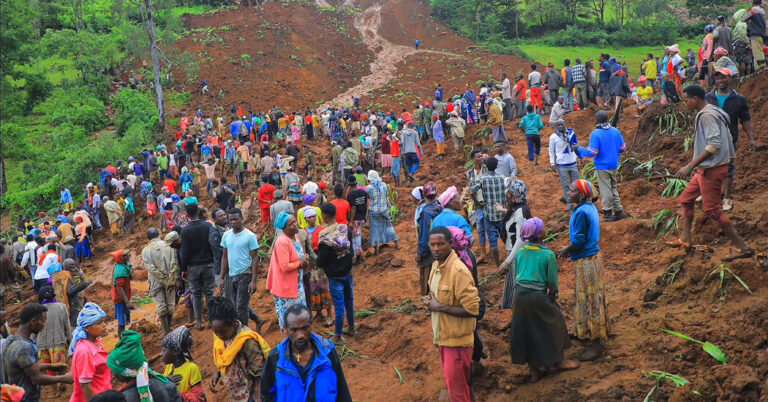At least 229 people were killed in southwestern Ethiopia on Monday after a landslide flattened several houses in a village following days of heavy rain, and neighbors who rushed to dig out those buried under the mud were hit with a second landslide about an hour later.
The first landslide struck the village in the Geze district between 8:30 and 9 a.m. on Monday, said Habtamu Fetena, who heads the local government’s emergency response. Nearly 300 people from two neighboring villages ran to the area to help and began digging through the mud by hand, he said Tuesday.
Then about an hour later, without warning, more mud slid down the hillside above the village, and killed many of those trying to help.
“They had no clue that the land they were standing on was about to swallow them,” Mr. Fetena said.
The village hit by the landslides lies in a region that is increasingly vulnerable to the effects of climate change, including long droughts followed by strong storms and more frequent and intense rainfalls, experts said.
Deadly landslides have struck the region before, another local administrator, Dagmawi Ayele, told the Ethiopian Broadcasting Corporation. While some villages were moved after earlier landslides, such disasters were now occurring in areas where they had previously been rare, he added.
The first landslide killed entire families as mud rolled down the hillside, officials said. Teachers and health care workers were among those killed in the second landslide. Among them was the local administrative leader, who had rushed to the scene. Most of those killed were men, but pregnant women and children were also among the dead, Mr. Fetena said.
The death toll was expected to rise as more victims were pulled from the mud. As of Tuesday afternoon, just 10 people had been pulled alive from the landslide, officials said. Mr. Fetena said only about 20 people had managed to flee to safety in the second landslide.
Prime Minister Abiy Ahmed on Tuesday said Ethiopia’s Federal Disaster Prevention Task Force had been sent to the area to help with relief efforts.
The largely rural area had experienced several days of heavy rain, hampering rescue efforts and saturating the land, causing multiple landslides. The mudslides destroyed crops in the area, where farmers produce wheat and barley.
The area where the landslides occurred is impossible to reach with heavy machinery, so villagers and rescue workers were forced to dig by hand. Images from the scene showed a gash in the green hillside where the mud slid down, with rescue workers, knee-deep in the mud, using hoes and shovels or their bare hands to search for victims.
In recent years, East Africa has experienced increasingly extreme weather, according to the United Nations. A third of the countries considered most susceptible to the risks of climate change are in southern and eastern Africa.
East Africa is already more exposed to intense weather because of its position and geography, said Andrew Kruczkiewicz, a climate scientist at the Red Cross Red Crescent’s Climate Center in The Hague. The region is strongly affected by La Niña and El Niño, the climate phenomena that can bring either cooler, wetter weather or drier, hotter weather, as well as the Indian Ocean Dipole, which can lead to higher rainfall on the African coast in some years.
This combination, along with rising temperatures, is making the region’s weather more volatile, Mr. Kruczkiewicz said.
Emerging data is also beginning to show that floods are beginning to follow droughts in closer proximity, and with less time in between, Mr. Kruczkiewicz added.
A drought in Ethiopia from 2016 to 2021 displaced about 800,000 people, while southern Ethiopia was hit by severe flooding last year that affected 1.1 million people, according to the United Nations International Organization for Migration.



